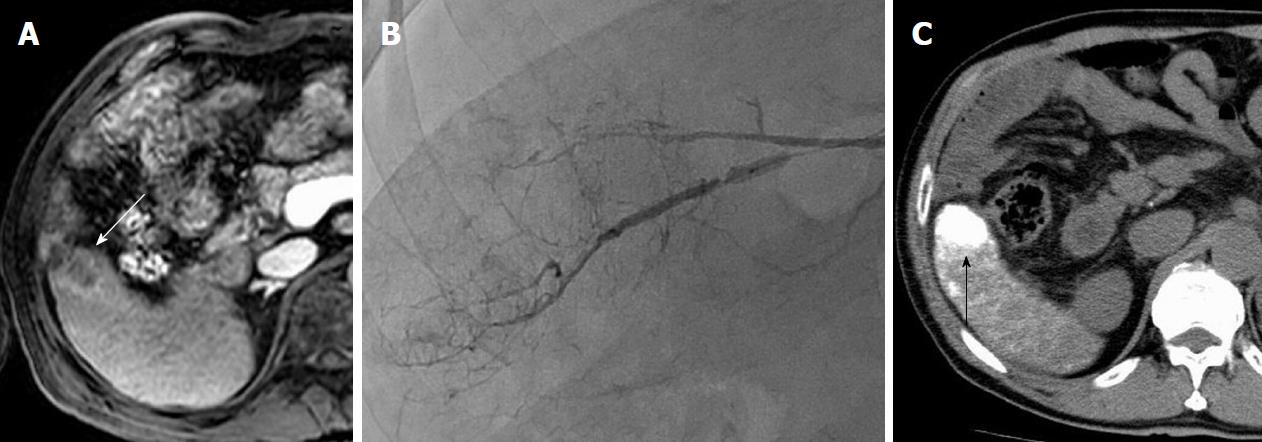Copyright
©The Author(s) 2018.
World J Hepatol. Jul 27, 2018; 10(7): 485-495
Published online Jul 27, 2018. doi: 10.4254/wjh.v10.i7.485
Published online Jul 27, 2018. doi: 10.4254/wjh.v10.i7.485
Figure 2 A 75-year-old man with hepatitis-B related hepatocellular carcinoma.
A: Gadolinium-ethoxybenzyl-diethylenetriamine pentaacetic acid-enhanced magnetic resonance imaging (EOB-MRI) showed that HCC was slightly enhanced in the arterial phase (white arrowhead); B: While angiography did not show the tumor stain obviously, we injected the lipiodol emulsion (LE) and fragmented gelatin sponge slurry from tumor-feeding artery under occlusion with microballoon inflation; C: A favorable LE accumulation (black arrowhead) was seen on computed tomography one day after balloon-occluded transcatheter arterial chemoembolization. HCC: Hepatocellular carcinoma.
- Citation: Hatanaka T, Arai H, Kakizaki S. Balloon-occluded transcatheter arterial chemoembolization for hepatocellular carcinoma. World J Hepatol 2018; 10(7): 485-495
- URL: https://www.wjgnet.com/1948-5182/full/v10/i7/485.htm
- DOI: https://dx.doi.org/10.4254/wjh.v10.i7.485









